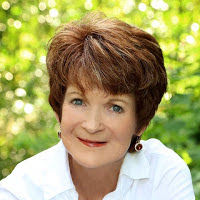by DiAnn Mills @DiAnnMills
Writers often write types of heroes break the traditional view of protagonists with the additive of anti-hero and dark hero.
An anti-hero is a character who doesn’t fall under the category of a hero or a villain. Although the anti-hero differentiates right from wrong, that doesn’t dictate what they’ll choose. Their actions, whether noble or ignoble, accomplish something that benefits them. Behavior may appear brave, courageous, and self-sacrificing, but a deeper look shows an untrustworthy character. The goal is self-serving, even if the outcome is good. The reader observes the anti-hero and sees admirable traits with the belief the character will eventually choose to be a hero.
The anti-hero wears gray, neither black nor white, and his actions depend on what will benefit him/her the most. Unfortunately, his selfish attitude may destroy him.
Anti-heroes:
- Jack Sparrow in Pirates of the Caribbean
- Darth Vador in Star Wars
6 Tips for Writing an Anti-hero
- Create a main character who is complex and can do good. Think of how you would write a traditional hero then toss in life experiences that alter a traditional hero’s behavior.
- Give your anti-hero internal conflict. Who wounded them? Why haven’t they recovered? Why does inappropriate behavior seem like the right thing to do?
- Discover what rules the anti-hero’s actions and thoughts.
- Don't confuse your anti-hero with the antagonist. The antagonist stands in the way of the anti-hero and will stop at nothing to reach their goal.
- Show the anti-hero wrestling with right and wrong.
- Show supporting characters who are sympathetic to the anti-hero and want to help him.
A dark hero is a character who lacks the traditional characteristics of an exceptional protagonist and is harder to like. This character may break the law for a cause greater than him/herself and demonstrate excessive violence. A dark hero isn’t concerned about who gets hurt, the violence, or even the outcome used to reach their goal; it’s all collateral. A “dark” side prevails using evil to accomplish good.
- Destroy a whole village to take out one bad guy.
- Slice up a bad guy and send the pieces to the rest of the gang as a message.
- Administer an experimental drug to inmates that could potentially kill them.
The character believes in the power of right but is misguided in behavior. Usually this character wants no part in taking on a heroic role. Dark heroes can redeem themselves through the course of the story, from where the title originated.
Dark heroes:
- Batman
- Jack Bauer in Twenty-Four
Does your story use an anti-hero or dark hero? Do you see a purpose for either type?
TWEETABLE
DiAnn Mills is a bestselling author who believes her readers should expect an adventure. She creates action-packed, suspense-filled novels to thrill readers. Her titles have appeared on the CBA and ECPA bestseller lists; won two Christy Awards; and been finalists for the RITA, Daphne Du Maurier, Inspirational Readers’ Choice, and Carol award contests.
She is the former director of the Blue Ridge Mountain Christian Writers Conference, Mountainside Marketing Retreat, and Mountainside Novelist Retreat with social media specialist Edie Melson. Connect here: DiAnnMills.com


An excellent post. Thank you, DiAnn.
ReplyDeleteMaryAnn. glad you enjoyed it.
DeleteI'd heard of an anti-hero but hadn't heard of a dark hero before.
ReplyDeleteI wasn't aware of a difference either until I explored the subject. What an eye-opener!
DeleteWhat an insightful article. Thanks!
ReplyDeleteThanks for sharing, DiAnn. The anti-hero I was aware of, but I needed clarification of the difference in the dark hero. Details are important! Thank you for always being willing to share your knowledge with others.
ReplyDelete